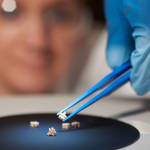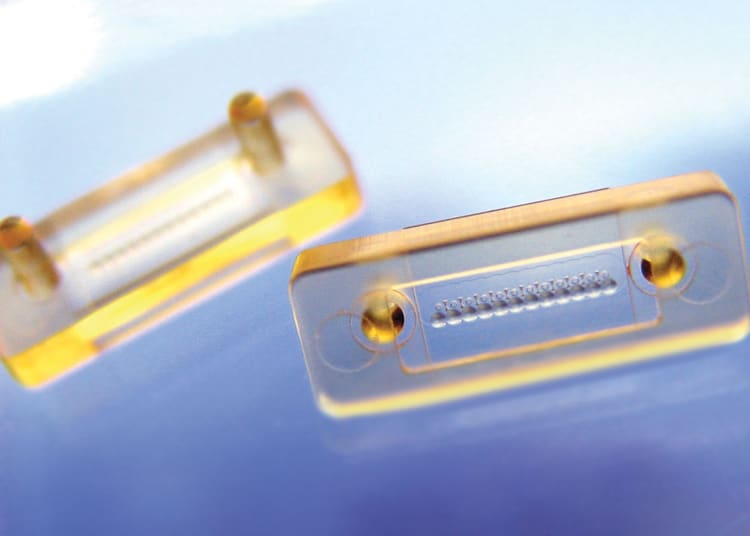
It is well understood that for micro molding success, it is important that customers seek out and work with truly vertically integrated micro molding partners. Accumold is a vertically integrated company from the quote, to design for manufacturing (DFM) and Design for Micro Molding (DfMM) assessment, tool design and build, automation design and build, automated visual inspection design and programming, and steel and part measurement. The company has always seen the value in being able to control the tool design and build, molding, and process validation in-house. The real value is being able to work with a customer and react to changes in a project quickly. By so doing, it is possible to control priorities in-house, and there is no necessity to rely on a third party or series of third party when it is important to react in an agile way to product development changes.
No longer a necessary evil
The importance of the validation aspect of the offering is often not given the level of importance that it should have, but when you consider the old adage, “if you cannot measure it you cannot make it”, its fundamental role in a successful, cost-effective, and “on time” product development process is obvious.
Measurement should be a central consideration in every quote issued by a micro molder. If a micro molder can make the steel micro tool, and subsequently mold the part, sure as night follows day it will need to be measured. As such, necessarily, process development and qualification - which includes measurement development and qualification - must be included in any customer quote.
Measurement development time, and Gage Repeatability and Reproducibility (Gage R&R) are vital and extremely valuable for micro molding customers, and a micro molder should work closely with the customer on model and print interpretation and DFM - more precisely DfMM - during the product development process. The measurement processes must be assessed and validated as the molding process is qualified. Very often, with measurement taking this central role, it moves from a necessary evil to an enabling technology, and at Accumold the metrology department has been successful helping customers improve their design, re-dimension prints, and better use Geometric Dimensioning & Tolerancing (GD&T) so that the part design is easier to mold, easier to measure, and performs better for the end user.
The key challenges
Very often in a micro molding scenario, metrology and validation-related issues can be challenging. Key areas of complexity include part size, part fixturing, print tolerances, and surface roughness.
Of these, part size is the key challenge. Micro molded parts can be dimensioned in microns, with features that only become visible under 10x (or greater) magnification. With such small part sizes, metrology methods need to be non-contact such as vision, laser, and white light.
Another challenge is how best to fixture the part that is being measured so repeatable and reproducible measurements can be achieved from program or manual measurement processes. At Accumold, we design and manufacture steel or 3D plastic custom fixtures designed to hold parts in various orientations to ensure we can measure all the features on a part.
Surface roughness is another critical metrology challenge because of the small size and critical finish requirements. Non-contact metrology tools are vital for such applications, tactile tools having the potential to compromise surface integrity.
At Accumold we use several non-contact metrology methods including vision (camera), laser, and white light interferometry. We use Optical Gaging Products (OGP) multi-sensor equipment with vision, laser and touch trigger capability to measure dimensions on mold steel and parts using X, Y, and Z coordinates; GD&T - using Measuremind software (and comparison to the part 3D model using Zone3 software); and ZYGO coherence scanning interferometers to measure fine details including Z heights, 3D surface finish, and lens dimensions. In addition, we sometimes use laser, vision, and white light measurement techniques on a single part based on the part size, feature size, surface finish requirements, and tolerance limits. We are routinely measuring parts with tolerances less than 10 microns.
With some projects it is important to work with a customer to identify critical features/dimensions, develop a measurement process on a OGP machine, prove the measurement method utilizing a fixture and programs as repeatable and reproducible, buy duplicate OGP machines and deploy the machines, fixture, and programs and trained production personnel to operate the machines and collect data in the production room.
However, sometimes project details require measurements to be done in a lab environment. When lab measurements are required, it is important to establish processes for part handling and delivery, prioritization of part measurements (FIFO, customer promise date, etc…), measurement method (fixture, machine, programs, manual), data collection, and reporting of results to production.
All metrology requirements including equipment (fixture, machines), methods (program, manual), data collection (automatic, manual) and reporting (automatic, email, data load) are included in part specific control plans.



